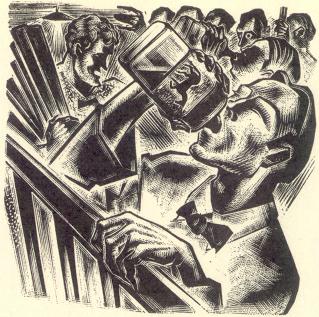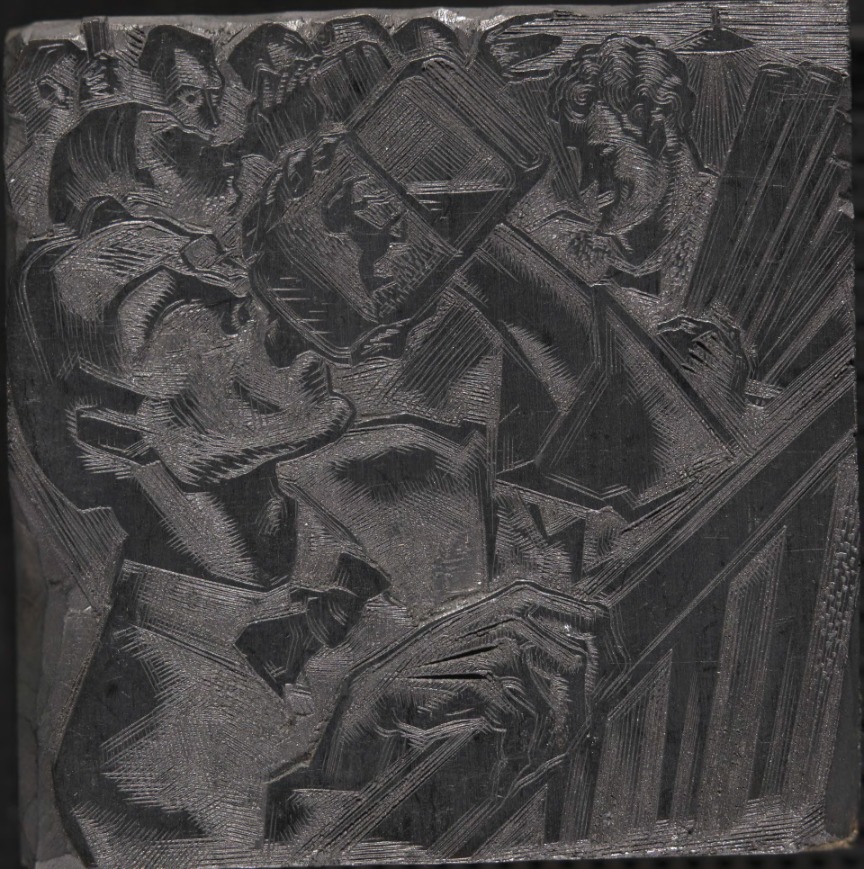An Elderly Gentleman : IMAGE 113 : Stallion Liquor
This image continues a triad of images originating with I111 and concluding in "The Boy" section, with I174. They join together to form a story within a story. In the incepting image, a thug clasps the liquor bottle marked by the stallion as he hulks over a paunchy caricature of middle management slouching in an easy chair in his office. The thug will ultimately lead a posse of vandals to the union headquarters under color of night to wreck the equipment and brutally assault the union organizers (I114-I119). Here, I113, a young man—a thug in training?—gulps from a bottle bearing the stallion brand before he goes out to wreak havoc. Behind him, another man is depicted in an almost identical position, imparting a sense of general rowdiness while it also emphasizes Ward's liking for matched pairs. I174 (see below) implies that the young man who runs his roadster off the road, and comes to a grisly end, is this same young thug-
-but his story is not unique. This is a crucial point. A kind of temperance lecture, this back story of ‘Stallion liquor’ parallels the downward trajectory of the Elderly Gentleman and his dependence on medication.
This small block and the preceding one with which it makes a formal sequence seem to diverge from the customary purpose of small blocks to focus interiority and frame symbols through spare compositions. Yet, the crowded image very vividly suggests what one might see gazing surreptitiously through a keyhole--or references the convention of keyhole gazing used in film. What seems like a disregard for image size is in fact quite the opposite. Ward follows his own formula for using the small image to focalize a distinct and unique point of view, but it is that of the private viewer, the reader. Thus Ward is using these images (I112,I113) to create for the reader his or her own sense of a privileged viewing, while also heightening the tension by suggestively placing the reader in a vulnerable (and compromised) position. Having performed the transgression of watching, the reader may sense that the limitations of visual space or the lack of superfluous detail militate against escape--whether from the brutality of the drinkers or his or her own conscience. Perhaps the second drinker pictured in the midground can then suggest the reader's own incriminating transgression, and thus (logically) his or her culpability for the ensuing acts of violence. The anxious, bug-eyed character present in both of these images (I112, I113) would seem to compel us to accept a reading along these lines.
Print view

